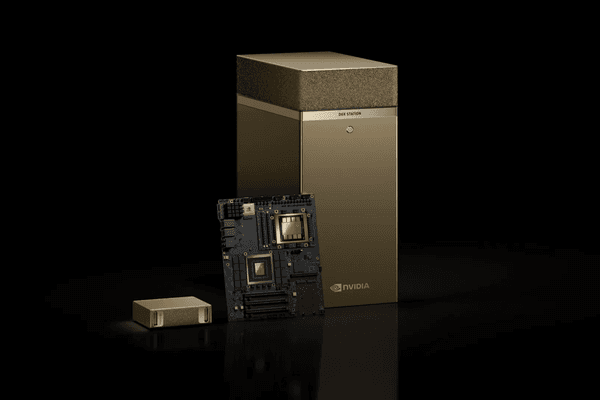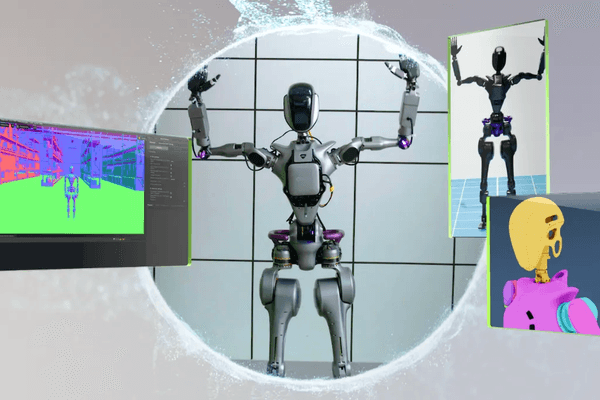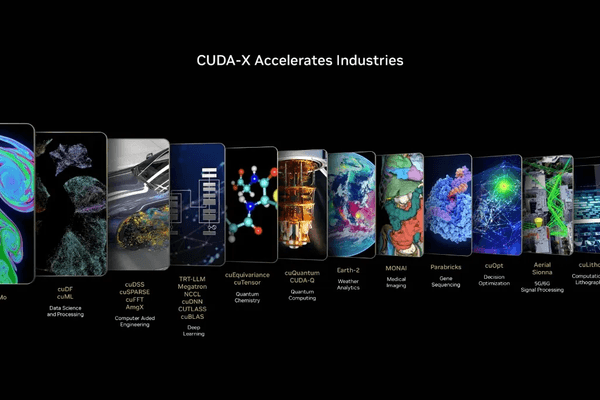With customized solutions combining Physical A.I. and Digital Twin technology, we diagnose problems in advance and provide optimal solutions based on real operational data. Experience technology that innovates reality starting from the virtual world.

NVIDIA has recently accelerated the development of physical AI systems through World Foundation Models (WFMs). WFMs are powerful neural networks used to simulate and predict real-world environments. These models are used to generate detailed videos based on text, images, and video input data, and to predict how a scene will evolve1[2] (https://blogs.nvidia.com/blog/world-foundation-models-advance-physical-ai/) . Characteristics of World Foundation Models - Real-world environmental simulations: WFMs help physical AI systems operate safely and efficiently by simulating real-world environments. This is essential for robots and autonomous vehicles to interact with the physical environment1[4] (https://www.nvidia.com/en-us/glossary/world-models/) ). - Create synthetic data: WFMs generate large-scale synthetic data to enhance training of AI models. This contributes to reducing the difficulty and cost of collecting real-world data1[3](https://research.aimultiple.com/world-foundation-model/). - Testing in a virtual environment: WFMs provide a virtual 3D environment, enabling safe and efficient testing of physical AI systems, which is less costly and less risky than testing in a real world1[3] (https://research.aimultiple.com/world-foundation-model/) . Industrial application WFMs can be used in a variety of industries: - Autonomous vehicles: WFMs simulate autonomous vehicles in a variety of traffic and weather conditions to ensure safe and efficient performance1[3] (https://research.aimultiple.com/world-foundation-model/) . - Robots: WFMs help robots operate safely and efficiently in a variety of environments. This is essential for robots to perform complex tasks1[3] (https://research.aimultiple.com/world-foundation-model/) . - Medicare: WFMs are used in the training of surgical robots to enable precise work [3] (https://research.aimultiple.com/world-foundation-model/) . NVIDIA Cosmos platform NVIDIA is offering WFMs open-source through the NVIDIA Cosmos platform, which helps developers easily build large-scale models and fine-tune them to specific needs1[3] (https://research.aimultiple.com/world-foundation-model/) . Future outlook WFMs will accelerate the development of physical AI systems and bring about innovative changes in various industries. This will help AI systems operate more safely and efficiently, and contribute to reducing the cost and risk of testing in real-world environments. NVIDIA plans to further accelerate the development of physical AI through WFMs. Source: https://blogs.nvidia.com/blog/world-foundation-models-advance-physical-ai/
Mar 27, 2025

NVIDIA recently announced a new AI computing platform, DGX Spark, at GTC 2025. The platform is designed to allow developers to prototype large-scale AI models locally, fine-tune them, and deploy them ш to data centers or clouds. Features of DGX Spark - Hardware specs: DGX Spark has 20 CPU cores and 128GB of GPU memory, with 1 petaflops of computing power, enabling the rapid development and deployment of AI models. - Partnership: NVIDIA, working with MediaTek, has implemented chip-to-chip MVLink technology for high-speed connectivity between CPUs and GPUs. - Price and power consumption: The DGX Spark is priced at around $150,000, with power consumption of 3,500 watts. Innovation in AI development DGX Spark is positioned as the best platform for AI developers and data scientists. It is expected to contribute to simplifying the development and deployment process of AI models and accelerating the spread of AI technology. NVIDIA plans to start pre-ordering DGX Spark to GTC 2025 attendees. These technological advances will create an environment where AI can be utilized faster and more efficiently in various industries. In particular, the role of AI is expected to expand further in various fields such as logistics, manufacturing, and medical care. NVIDIA's DGX Spark will establish itself as a key technology in this AI innovation. [While gamers beg for GPUs, Nvidia is making AI mini-PCs | PCWorld](https://www.pcworld.com/article/2642483/while-gamers-beg-for-gpus-nvidia-is-making-ai-desktops.html)
Mar 27, 2025

NVIDIA has recently leveraged OpenUSD and Synthetic Data to accelerate innovation in the development of humanoid robots. Humanoid robots require large datasets to train complex AI models needed to interact with the physical environment. However, collecting such data is time-consuming and expensive. To address this, NVIDIA is generating Synthetic Data to help robots learn and validate in virtual environments. Role of OpenUSD - Building a virtual environment: OpenUSD stands for Universal Scene Description, which is used to create physically accurate 3D virtual environments. This makes it easier for developers to create environments where robots can learn and improve in a variety of scenarios. - Create synthetic data: OpenUSD, along with NVIDIA's Omniverse platform, can generate large synthetic datasets, which are essential for robots to learn human-like behaviors. Synthetic data contributes to the improvement of robots' ability to walk, grab objects, and navigate complex environments. Benefits of synthetic data - Earlier data collection: Synthetic data can be generated much faster than actual data collection, which significantly speeds up robot development. - Reduce costs: Actual data collection is expensive and time consuming, but synthetic data helps reduce these costs. - Learning in a virtual environment: Synthetic data enables robots to learn in a virtual environment, enabling faster and safer development than real-world testing. Industrial application Humanoid robots are contributing to increasing efficiency and enhancing safety in various industries, such as manufacturing, warehousing and logistics, and healthcare. Major robot companies, such as Boston Dynamics and Figure, are already making progress by leveraging NVIDIA's Isaac GR00T. Future outlook The utilization of OpenUSD and synthetic data is an important technology to usher in a new era of humanoid robot development. It enables robots to learn faster and more efficiently, and to operate successfully in real-world environments. Through these technologies, NVIDIA will increase the efficiency of robot development and contribute to innovative achievements in more industries. Source: https://blogs.nvidia.com/blog/openusd-synthetic-data-for-humanoid-robots/
Mar 27, 2025

NVIDIA is currently accelerating innovation in science and engineering with its CUDA-X library at GTC 2025. CUDA-X leverages NVIDIA's latest GB200 and GH200 superchip architectures to enhance integration between CPUs and GPUs, and significantly improve computational performance. This enables up to 11x faster performance and 5x larger computations than traditional accelerated computing architectures12. CUDA-X Features CPU-GPU Integration: CUDA-X enables memory sharing between CPUs and GPUs through NVIDIA's Grace CPU architecture and NVLink-C2C interconnect. This allows developers to solve bigger problems without writing any special code 12. Domain-specific libraries: NVIDIA has developed more than 900 domain-specific CUDA-X libraries and AI models, facilitating the adoption of accelerated computing. It is utilized in a variety of fields, including astronomy, particle physics, quantum physics, automotive, aerospace, semiconductor design, etc.12. Performance Improvements: NVIDIA's cuDSS library is used to solve large-scale engineering simulation problems, which are utilized for design optimization, electromagnetic simulation, and more. cuDSS efficiently handles large matrices through Grace GPU memory and NVLink-C2C interconnects12. industrial application CUDA-X can be used in a variety of industries: Engineering Simulations: Ansys and Altair OptiStruct significantly improve their performance in electromagnetic simulations and finite element analysis with cuDSS. Ansys' HFSS software achieved up to 11x speedup12. Quantum Computing: NVIDIA's cuQuantum library accelerates quantum algorithm simulation to support quantum computing research. The GH200 architecture delivers up to three times faster performance than the H100 system 12. a future outlook CUDA-X will bring about innovative changes in science and engineering, helping developers and researchers solve complex problems in a faster and more efficient way. With CUDA-X, NVIDIA will accelerate the spread of accelerated computing and contribute to innovative achievements in various industries. Source: https://blogs.nvidia.com/blog/cuda-x-grace-hopper-blackwell/
Mar 27, 2025